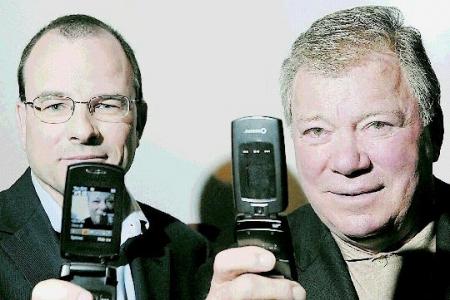Peter Wilson
Sun

Andrzej Kowalksi demonstrates Calgoo software on his laptop. Photograph by : Ian Lindsay, Vancouver Sun
You have all your appointments at work on an Outlook calendar. Meanwhile, your spouse’s daily activities are set out on a Google calendar online. And the school activities of your children are inscribed minute by minute, hour by hour, on iCal from Apple.
This lack of digital calendar coordination makes it tough for any modern family to stay on top of where they’re supposed to be and when.
Well, Andrzej Kowalski, CEO of Vancouver-based Time Search Inc., feels your pain — and he believes he has a solution that the whole world is going to want.
It’s called Calgoo, and it’s a cross-platform — Windows, Mac OSX, Linux — computer program that coordinates Outlook, Google and iCal calendars into one that will list everything your family is doing.
“This way my wife knows when I’m going to leave early and come home late,” said Kowalski. “I know when certain family social events are taking place. And I can check to make sure that there’s no school play when I’m setting up appointments.”
As well, adds Kowalski, Calgoo (www.calgoo.com) will solve problems for business people.
“There are whole bunches of businesses that can’t afford to operate shared calendaring,” said Kowalski, whose company is privately held. “As a small business owner, I now not only see my wife’s and my son’s schedules, but I also see those of my co-workers.”
As more calendars come online, Calgoo will add synchronization with them, and will also be available on PDAs and cellphones.
At the moment, Calgoo — which recently was judged best in the desktop category at the Under the Radar conference in Silicon Valley — is a free download, but it will soon be joined by a for-pay version.
Kowalski said that Calgoo has three additional ways of making money.
“We also have an advertising play on an event-based model,” said Kowalski. “Right now if advertisers want to advertise an event to you — whether it’s the Abbotsford Air Show or a hockey game or a concert — they’ll send you an e-mail, if they have your address, or they’ll put an ad on a Web page.”
With Calgoo, he said, advertisers will send messages to users about events.
“You’ll be able to scrutinize them and click through to a Web page that will tell you more about the event and let you buy tickets for it. You’ll also be able to click on it and put it right into your Calgoo calendar.”
As well, there will be an advertising-supported Web page where the various online calendars will be ranked and discussed by users.
Finally, said Kowalski, Electronic Arts Canada co-founder Bruce McMillan has joined Time Search’s advisory board and will help it develop Calgoo for gamers who want to coordinate the times they get together for their online encounters.
“Ultimately, what we hope will come out of this is another calendar, which will be your game schedule.”
© The Vancouver Sun 2007







